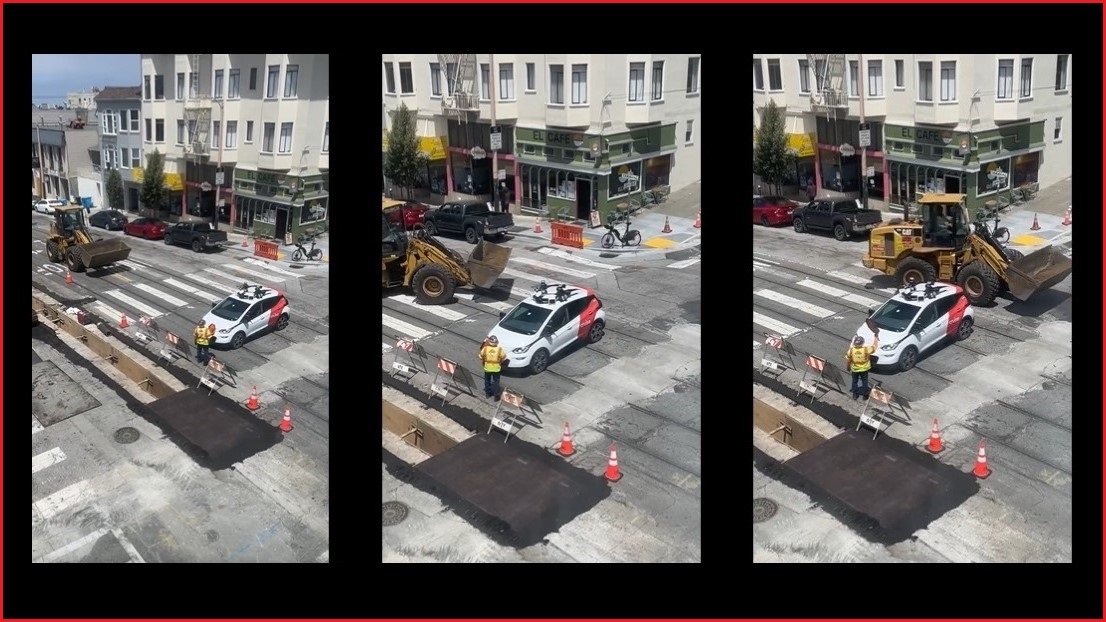Autonomous vehicle operator Cruise has been forced to halve its fleet of self-driving ‘robotaxis’ after just one week in operation, after two “concerning incidents” in San Francisco validated critics’ concerns that the vehicles pose an unacceptable risk to public safety.
Ordered by the California Department of Motor Vehicles (DMV), the reduction – which will limit the company to 50 driverless vehicles during the day and 150 at night – comes after a passenger was taken to hospital when a Cruise robotaxi collided with an emergency vehicle that was approaching an intersection with sirens blaring.
The autonomous vehicle (AV) was progressing through a green light and detected the sound of the siren – but couldn’t stop quickly enough to avoid the oncoming emergency vehicle, which had run a red light and crossed to the other side of the road on its way to an urgent call.
It was an irregularity too complex for the car to deal with, Cruise San Francisco market general manager Greg Dietrerich said in a statement, pointing out that occlusion by buildings made it hard for the car to see the emergency vehicle around a corner.
“There are many aspects that looked typical from the AV’s perspective and several factors that added complexity to this specific incident,” he said.
Although Cruise vehicles have successfully navigated more than 168,000 “interactions” with emergency vehicles this year, “we realise that we’ll always encounter challenging situations,” Dietrerich said, “which is why continuous improvement is central to our work.”
Another collision, on the same night, saw an empty Cruise car hit another vehicle in the city – the second of what the DMV termed “concerning incidents” as it launched a formal investigation to determine whether the vehicles pose “an unreasonable risk to public safety”.
Questions about autonomous vehicles’ true road toll
The incidents come just a week after Cruise, along with Google-backed competitor Waymo, were granted permission to carry passengers nearly anywhere in the city at any time – and were almost immediately caught blocking roads and causing traffic chaos.
It was a problematic start for self-driving taxis that have already caused ongoing friction with safe streets activists and emergency services crews, who have found themselves negotiating with – and even damaging – vehicles that had been unable to navigate changed conditions during firefighting incidents.
The approvals also led San Francisco to launch an autonomous shuttle service servicing 2,000 residents on human-made Treasure Island, in San Francisco Bay.
Even as Cruise winds back its operations to address safety concerns, newly reported statistics suggest that autonomous vehicles are regularly involved in collisions with other vehicles.
California’s DMV has recorded 637 reports of collisions involving AVs, including more than 90 incidents this year alone – 36 of which involved Waymo cars and 32 Cruise vehicles.
Two incidents involved self-driving test vehicles owned by Apple – whose AV ambitions have been closely followed for years – but these were relatively minor, with one car grazing the kerb while the other saw the test car rear-ended.
By contrast, recent reports revealed that Tesla’s Full Self Driving (FSD) capability has been linked to 736 crashes and 17 fatalities.
The figures have been publicised since regulators last year ordered AV operators to report on serious AV crashes – something Waymo sued regulators, with some success, in an attempt to stop – and overall show that AVs are statistically safer than cars driven by humans.
Autonomous technologies, “if done right, hold great promise to improve roadway safety,” safety body the NHTSA said last year in kicking off its latest data collection policies – what it calls “a first step toward… a more data-driven approach to ensuring that AV technology is deployed safely.”
Data is already illuminating the cause of many incidents, with “sensing and perceiving” errors – due to driver distraction, impeded visibility and failing to respond to hazards – causing 23 per cent of reported crashes involving AVs, according to one Insurance Institute for Highway Safety analysis.
Accident waiting to happen
New RMIT University research examined the effect of distraction on drivers’ ability to take control of an automated vehicle in an emergency situation.
Testing the idea that AVs will allow passengers to rest, work, or just scroll on their phones while the car does the hard work, researchers found that “all of these tasks worsened the takeover and led to a period of poorer driving,” lead study author Dr Neng Zhang said, noting that inexperienced drivers responded “more slowly and less effectively”.
The longer participants had been resting or playing, the slower they were to react.
“As soon as something unexpected happens, such as a child running across the road, we need to be able to use our full cognitive abilities to assess the situation and take appropriate action,” said co-author RMIT University Professor Stephen Robinson.
“Takeover requests in automated vehicles occur when the onboard computer lacks the capacity to deal with changed or complex driving conditions. Such conditions are potentially dangerous and require the driver to focus quickly and act decisively to keep our roads safe.”










